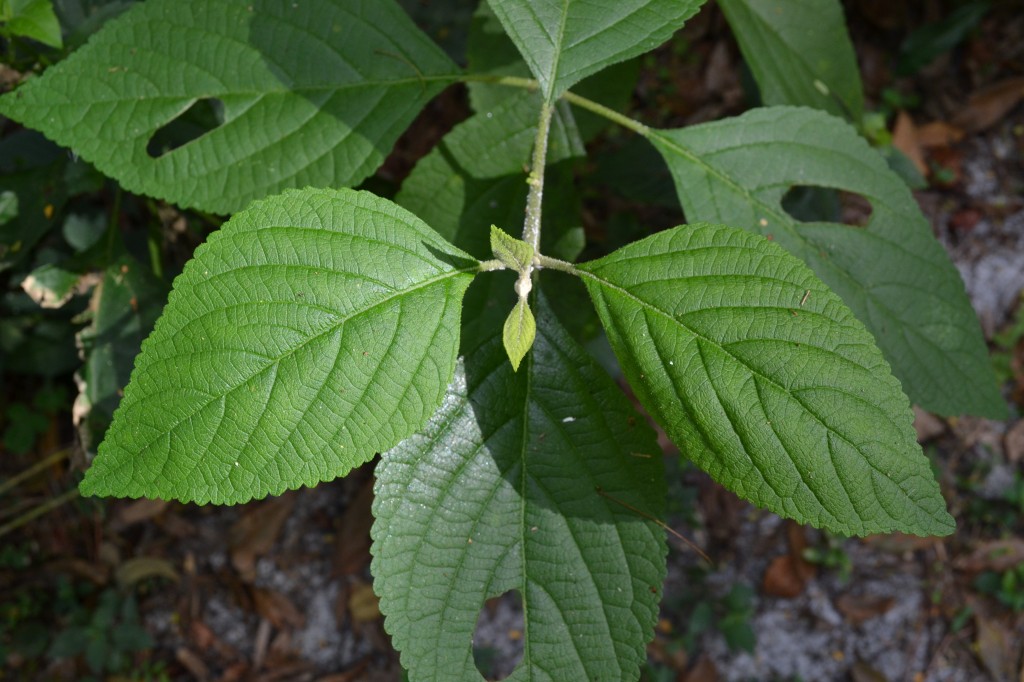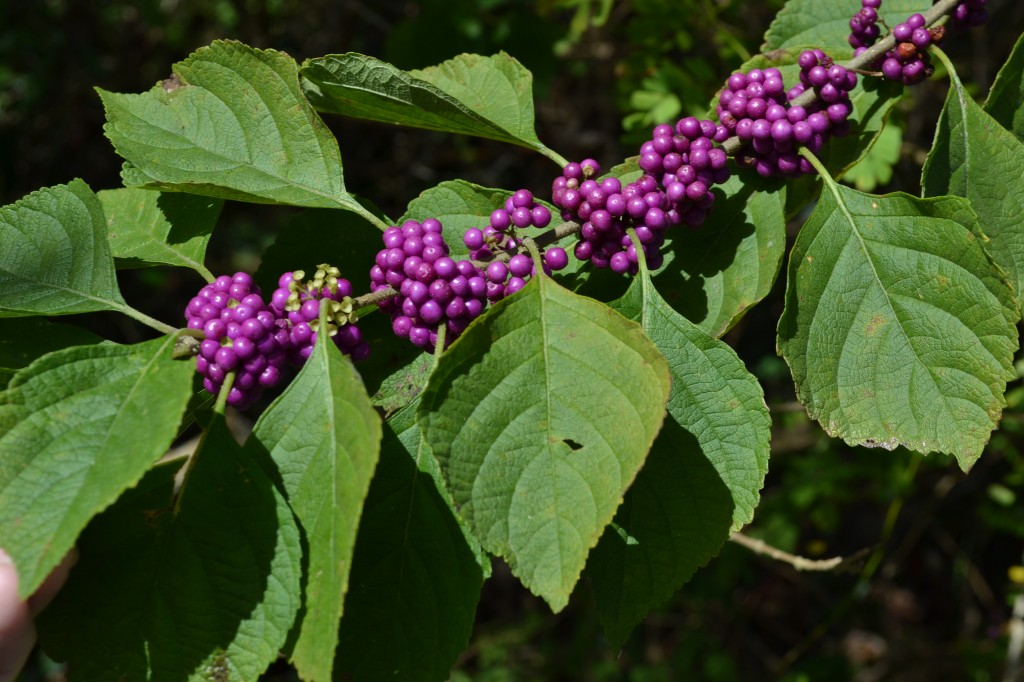Beautyberry
Callicarpa americana
Plant Family: Lamiaceae
Leaves: Opposite, simple, ovate, margins lightly toothed, to 15 cm; the veins are noticeable and follow the leaf edges.
Bark: Light brown, smooth, with raised lenticels; has multiple trunks when growing in the understory of hammocks, has one or just a few trunks when growing in full sun.
Flowers: Small, pink, in tight clusters in the leaf axils; appearing spring into summer.
Fruits: Bright purple-red drupes in attractive clusters in the leaf axils; eaten by birds and other animals, thus distributing the seeds; appearing late summer and persisting on the branches for several weeks. A cultivated variety has white fruits.
Habitat: Beautyberry is a generalist species that is at home in a number of different habitats, including hammocks, pinelands, open woods, and disturbed sites; it is also commonly cultivated.
Growth Form: Shrub to small tree.
Key Feature: The dense clusters of purple-red fruits easily identify this common species.
Comments: Beautyberry ranges north to Maryland and west to Arkansas. Cold hardy cultivars will be found planted as far north as Massachusetts. It was formerly placed in the Verbenaceae family.


